| ________________
CM . . .
. Volume XVII Number 19. . . .January 21, 2011 
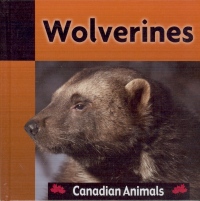 |
Wolverines. (Canadian Animals).
Sandra McIntyre.
Calgary, AB: Weigl, 2011.
24 pp., pbk. & hc., $10.95 (pbk.), $23.95 (hc.).
ISBN 978-1-55388-672-3 (pbk.), ISBN 978-1-55388-671-6 (hc.).
Subject Heading:
Wolverine-Canada-Juvenile literature.
Grades 1-3 / Ages 6-8.
Review by Mary Thomas.
*** /4
|
| |
|
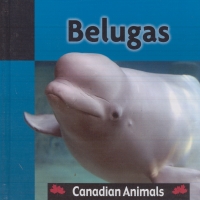 |
Belugas. (Canadian Animals).
Simon Rose.
Calgary, AB: Weigl, 2011.
24 pp., pbk. & hc., $10.95 (pbk.), $23.95 (hc.).
ISBN 978-1-55388-675-4 (pbk.), ISBN 978-1-55388-674-7 (hc.).
Subject Heading:
White whale-Canada-Juvenile literature.
Grades 1-3 / Ages 6-8.
Review by Mary Thomas.
*** /4
|
| |
|
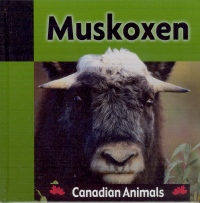 |
Muskoxen. (Canadian Animals).
Laura Pratt.
Calgary, AB: Weigl, 2011.
24 pp., pbk. & hc., $10.95 (pbk.), $23.95 (hc.).
ISBN 978-1-55388-669-3 (pbk.), ISBN 978-1-55388-668-6 (hc.).
Subject Heading:
Muskox-Canada-Juvenile literature.
Grades 1-3 / Ages 6-8.
Review by Mary Thomas.
*** /4
|
| |
|
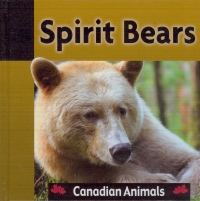 |
Spirit Bears. (Canadian Animals).
Jennifer Howse.
Calgary, AB: Weigl, 2011.
24 pp., pbk. & hc., $10.95 (pbk.), $23.95 (hc.).
ISBN 978-1-55388-663-1 (pbk.), ISBN 978-1-55388-662-4 (hc.).
Subject Heading:
Kermode bear-British Columbia-Juvenile literature.
Grades 1-3 / Ages 6-8.
Review by Mary Thomas.
*** /4
|
| |
|
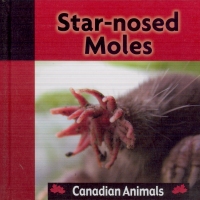 |
Star-nosed Moles. (Canadian Animals).
Christine Webster.
Calgary, AB: Weigl, 2011.
24 pp., pbk. & hc., $10.95 (pbk.), $23.95 (hc.).
ISBN 978-1-55388-666-2 (pbk.), ISBN 978-1-55388-665-5 (hc.).
Subject Heading:
Star-nosed mole-Canada-Juvenile literature.
Grades 1-3 / Ages 6-8.
Review by Mary Thomas.
*** /4
|
| |
|

excerpt:
Growing Up
Most female wolverines give birth to two or three kits at a time. Kits are born in a den between February and May. Wolverines build dens in hollow trees, caves, or tunnels in the snow. A mother wolverine may have several dens. She will move kits often to keep them safe from predators. Wolverine kits are full grown by the time they reach seven months old. Wolverines rarely have kits two years in a row. (From Wolverines.)
The five books in the "Canadian Animals" series are unusual in that they feature animals which are not the same old bunnies/mice/deer that are found in every other series. Few children, if asked to name a favourite animal, would choose the star-nosed, mole, for example! The five featured animals (wolverines, belugas, muskoxen, spirit bears, and the aforementioned star-nosed moles) are mostly endangered due to habitat reduction, the exception being the muskox which has been brought back from the edge by an early government protection programme, but it does not appear that this was the rationale for their selection. The editor merely wanted different, and got it.
The format of all the books is similar, with emphasis being placed on the sort of facts that would be required for a grade 2 or 3 classroom project: where the animal lives, its habitat, size at birth, number of babies born at one time, food, etc. There is an index and a glossary, both of which will help in teaching young children how to conduct a research project. Maps showing where the animal lives are useful adjuncts to the verbal description given in the text.
The layout of the pages is attractive with lots of colourful pictures and small chunks of easy-to-read text. Some of the text is attached to a picture, but it contains new information, not just a description of what is going on in the illustration. There is enough information to satisfy a teacher's project outline, but there are also a few out-of-the-way facts to amuse and engage the reader. Websites and addresses for the curious are a bonus.
There are one or two problems. Each book is written by a different person, and the outlines each was given roughly correspond to the table of contents. How the information is packaged within those titled sections is very different depending on the author. For example, there is no uniformity in how the length of the animal is measured. The star-nosed mole is said to be 17.5-20.5 cm long, but when we are told that its tail is 6.5-8.5 cm long there is no indication as to whether the one measurement included the other. Spirit bears, on the other hand, are "between 121 and 182 cm from the tip of their nose to the end of their tail" -- a much more precise detailing.
There are growth charts included in all the books, but again they all compare different things. Some compare weights of the animals at birth and adulthood, some compare lengths, and some juxtapose the comparison with similar measurements of human beings. These last really do not accomplish anything except to show that animals that start out smaller than people usually end up smaller and vice versa. The only creature for which this is not the case--the spirit bear--did not attempt the comparison. If the student were researching only one animal. this would not matter, but if s/he wanted to compare several creatures, s/he would have a very difficult time.
Each book contains a map of Canada (in green) with the range of the particular animal indicated in red, and a verbal description of this range in the accompanying text. The two do not agree in every case. As well, in the wolverine book, for example, 'range' is used on adjacent pages to mean the amount of land a particular animal might travel over, as well as the areas of the country where one of the animals might be found. The two should have been differentiated.
I liked the inclusion of a section on the place these animals hold in North American Aboriginal culture. It is unfortunate that, when there is a relevant myth, it is told in such a compressed form that it loses most of its point, but the intention is good, and an attentive teacher could, no doubt, find a better telling of the tale.
A good many of these complaints could have been alleviated with more careful editing. It is not enough to give an author an animal and an outline. However, the series does introduce a bunch of different animals and is at a useful level, bridging the gap between the very simple "All about..." series and the somewhat more advanced "Nature's Children." It should be a useful addition to an elementary school library.
Recommended.
Mary Thomas works in an elementary school library in Winnipeg, MB, and expects that these books will be well used by both teachers and children.

To comment
on this title or this review, send mail to cm@umanitoba.ca.
Copyright © the Manitoba Library Association. Reproduction for personal
use is permitted only if this copyright notice is maintained. Any
other reproduction is prohibited without permission.
NEXT REVIEW |
TABLE OF CONTENTS FOR THIS ISSUE
- January 21, 2011.
AUTHORS |
TITLES |
MEDIA REVIEWS |
PROFILES |
BACK ISSUES |
SEARCH |
CMARCHIVE |
HOME |




